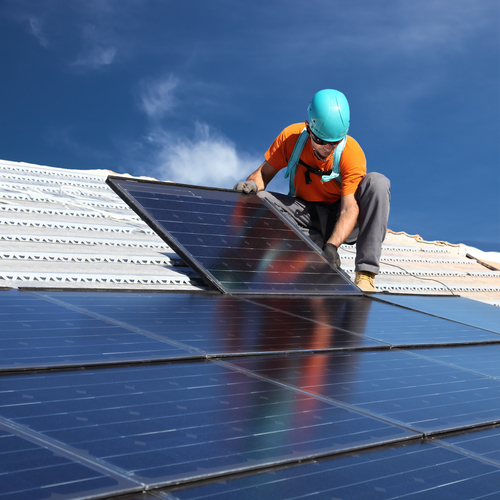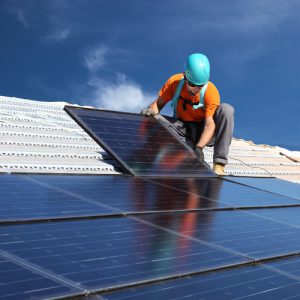Do You Need Fasteners For Mounting Solar Panels?

Depending upon the configuration of mounting a solar panel, there are different types of fasteners required to firmly hold the structure in order to resist any structural bend under extreme conditions. Reliability and stability of the mounting fasteners cannot be comprised, especially when the setup in question is a solar panel.
Most distributors welcome the fact that aluminum bolts and screws are durable enough to bind the joints of the solar panel, irrespective of the location. Aluminum, because of its lighter weight and corrosion resistant properties is an ideal material for mounting fasteners. On the other hand, 316 stainless steel rods are perfect for holding the panel, thus providing the required firmness in the mounted conduit. There are basically two types of solar panel installations and both require different kinds of fasteners.
Mounting Solar Panels via Pole-Mount Installation

This is basically installing the solar panel on the ground in an open space which receives sufficient amount of sun rays throughout the daytime. In this type of mounting, adjustable clips and struts are used. The reason behind using amendable brackets is to fulfill the need of adjusting the panel twice or thrice a year, depending upon the direction of sunlight. There needs to be a concrete piping system drilled in the ground and the panels can be placed either at one of the sides of the pole or at the top. You can use stainless steel bolts for mounting the poles and aluminum clips or brackets to form the adjustable part.
Mounting Solar Panels via Roof-top Installation
This is the most common type of installment employed for setting up a solar panel to extract renewable source of energy. It involves slanting the surface of panel directly in line of contact with the sun beams, in case the roof is flat. For a sloped roof, there is an inclination provided only if the panel surface is not exposed properly to the sun. The racks are fastened onto the floor through Asphalt roofing shingles. This not only acts as a waterproofing agent, but also combat snow covering.
The panel requires some amount of flexibility to make the adjustments in order to get the best out of heat from sunlight. Even though this can be controlled through the tracking system, having adjustable fasteners in place allows you to manually orient the panel as per the requirement.
Use lag bolts to hold the mounting base and make sure the fasteners you use are made of stainless steel. Since the whole thing is exposed to atmosphere, there is a high probability of galvanic corrosion taking place and therefore you need materials that can resist such an action. Given the convenience of sufficient space on the roof, this method of installment is both economically feasible and productive.
About the Author

Started my career in the fastener world in 1969 at, Parker Kalon Corp. a NJ based screw manufacturer located in Clifton, NJ working in inventory control, scheduling secondary production and concluding there in purchasing. In 1971 I accepted a sales position at Star Stainless Screw Co., Totowa, NJ working in inside sales and later as an outside salesman, having a successful career at Star I had the desire with a friend to start our own fastener distribution company in 1980 named: Divspec, Kenilworth, NJ. This was a successful adventure but ended in 1985 with me starting Melfast in August 1985 and have stayed competitive and successful to date. Melfast serves the OEM market with approximately 400 accounts nationally.